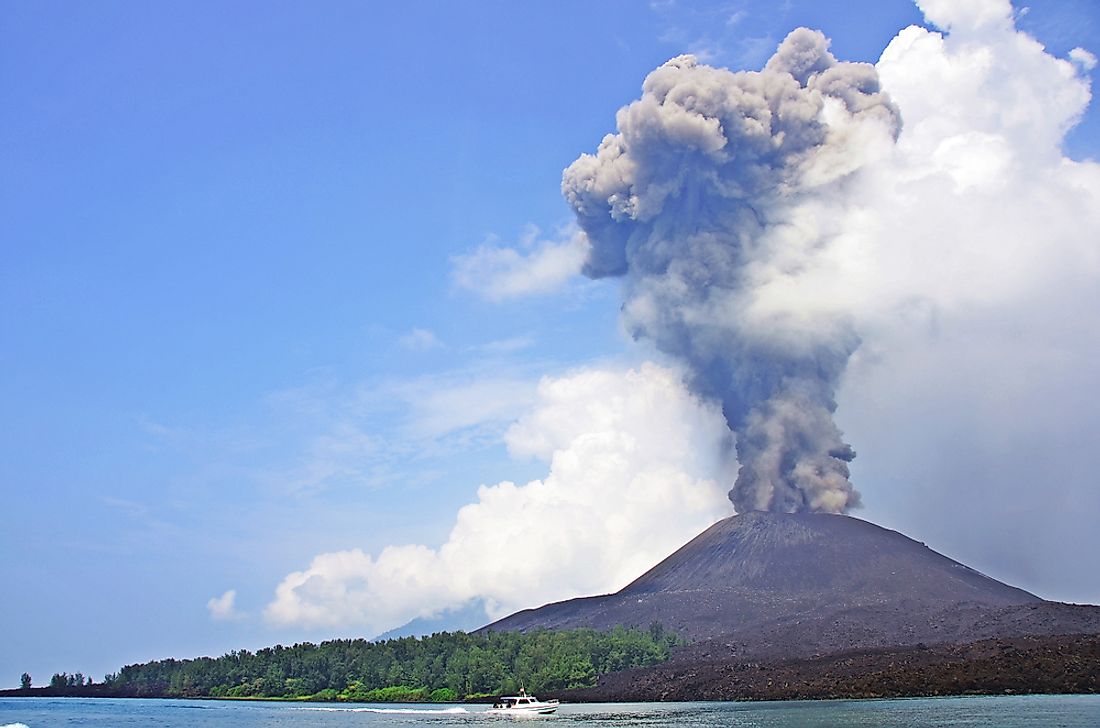When Did Krakatoa Erupt?

Krakatoa is a volcanic island in the Sunda Strait, located between the islands of Java and Sumatra in the Indonesian province of Lampung. In addition to the large island, Krakatoa is often used to refer to the smaller surrounding islands. The eruption of Krakatoa is one of the most violent volcanic activities in recorded history. Its eruption was the culmination of a series of massive explosions that began on August 26, 1883, and peaked the following morning, when about 70% of the island and its surrounding area were destroyed and collapsed into a caldera or volcanic crater. The eruption of Krakatoa resulted in massive destruction and thousands of deaths. A new island, known as Anak Krakatau, which means "child of Krakatoa," also emerged after the eruption.
Start of the Eruption
The years preceding 1883 were characterized by intense seismic activity around the Krakatoa volcano. In fact, earthquakes were felt as far away as Australia. Beginning on May 20, 1883, steam venting began to occur, primarily from one of the island’s three cones, known as Perboewatan. Ash from the eruptions reached elevations as high as 20,000 feet and the noise from the explosions could be heard in Jakarta, which is approximately 99 miles away. The eruptions stopped by the end of May for several weeks, only to start again on June 6. On this day, a loud explosion was heard, followed by a thick black cloud that covered the island for five days. The black clouds were eventually cleared by prevailing east winds on June 24. Ongoing eruptions led to the formation of unusually high tides in the area.
Eruption Intensifies
The eruptions of Krakatoa intensified on August 25, 1883, and by August 26 the volcano had reached the paroxysmal or climatic phase. By 2:00 pm, a black cloud of ash as high as 17 miles could be seen. The eruption continued and explosions could be heard every ten minutes. Ashfall, accompanied by pieces of hot pumice, were reported as far as 12 miles away, and a small tsunami hit the shores of the islands of Sumatra and Java between 6:00 am and 5:00 pm. Four large explosions occurred the following day (August 27), the first occurring in Perboewatan at approximately 5:30 am. The first explosion triggered a tsunami, which headed straight to Telok Betong (Bandar Lampung). The second explosion occurred at 6:44 am in Danan, and caused the tsunami to extend both east and west. The third and largest explosion occurred at 10:02 am and was heard 1,930 miles away in Perth, Australia, as well as on Rodrigue Island, which is located about 3,000 miles away in the Indian Ocean. The noise caused by the third explosion is considered to be the loudest sound ever heard in history.
Final Explosion
The fourth and final explosion of Krakatoa occurred at approximately 10:41 am that same day, and was caused when half of the Rakata volcano was torn off by a landslide. The explosion generated a pressure wave measuring 675 mph, and was so intense that some barographs recorded it seven times within the next five days. The wave traveled away from the volcano to its antipodal point and rounded the globe about 3.5 times. The eruption reached about 310 decibels and could have been heard clearly about 3,100 miles away. In fact, it was so loud that it ruptured the eardrums of sailors 40 miles away in the Sunda Strait.











